TEAL

Beez Neez now Chy Whella
Big Bear and Pepe Millard
Tue 15 Oct 2013 22:37
|
TEAL – Tasman Empire Airways
Limited
 TEAL was the forerunner of Air New
Zealand. It was first registered in Wellington as a limited liability company on
the 26th of April 1940.
The inaugural service from Auckland
to Sydney flew on the 30th of April 1940 by Aotearoa, one of its two Short
S30 flying boats. There was a connection at Sydney with the Qantas/BOAC route to
Great Britain which meant that there was, for the first time, a regular through
air service between New Zealand and Britain. This lasted less than six weeks as,
when Italy entered World War II in June 1940, it was no longer possible to fly
through the Mediterranean. The TEAL service then provided a connection with the
Horseshoe Route.
The first four months of operation
saw a weekly return service between Auckland and Sydney. This was expanded to
thrice fortnightly with connections to San Francisco using Pan Am flights from
Auckland (Pan Am was not flying into Australia). The connection to San Francisco
ended in December 1941 when Japan entered the war.
In the first year, the annual report
revealed that one hundred and thirty trans-Tasman flights had been completed
carrying one thousand, four hundred and sixty one passengers for a profit, prior
to tax and dividends, of NZ$ 31,479 (16,458 pounds).
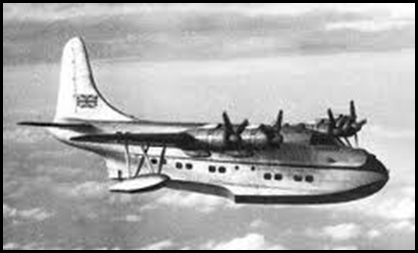 The Coral Route is one of the most
famous routes flown by TEAL. NZ National Airways Corporation had initiated
Pacific Island flying Douglas DC3 aircraft, Auckland/Nadi (Fiji)/Faleolo
(Samoa), Aitutaki and Rarotonga (Cook Islands). These routes were later taken
over by TEAL, which wanted to fly to Tahiti, but there was no airstrip at
Papeete, so a flying boast was necessary. After completion of a survey flight by
a TEAL-operated ex-RNZAF Catalina ZK-AMP in 1951, the Coral Route flight from
Auckland to Papeete, Tahiti, via Laucala Bay at Suva, Fiji, Satapuala at Apia,
Samoa, and Akaiamai at Aitutaki in the Cook Islands, was inaugurated by TEAL on
the 27th of December 1951, using the Short Solent flying boats long used between
Auckland and Sydney. The Coral Route was born. It became the only air route into
fabled Tahiti, with Americans and others from Northern Hemisphere flying by land
planes into Nadi in Fiji, making the short hop across to Suva to join the flying
boat at Laucala Bay, Suva, for its fortnighly flight along the Coral Route,
leaving on a Thursday morning for Samoa, alighting on the Satapuala lagoon about
2 p.m. Passengers were driven by cab through picturesque Samoan coastal villages
to Apia, where they enjoyed respite and dinner at Aggie Grey's hotel until 2
a.m. when they were driven back out to Satapuala for a pre-dawn take-off to the
Akaiami lagoon at Aitutaki where they went ashore for breakfast and an optional
swim until mid-morning takeoff for Papeete, timed to ensure that arrival was
after the end of the siesta period at 2 p.m. After launching ashore and
completing Customs, passengers had to wait a further hour while their luggage
was sprayed against horticultural pests, a time usually spent by the majority
across the road from the Customshouse at famous Quinn's Bar. In all, a
thirty-hour leisurely introduction to life in the South Seas which made the
Coral Route a legendary travel experience.
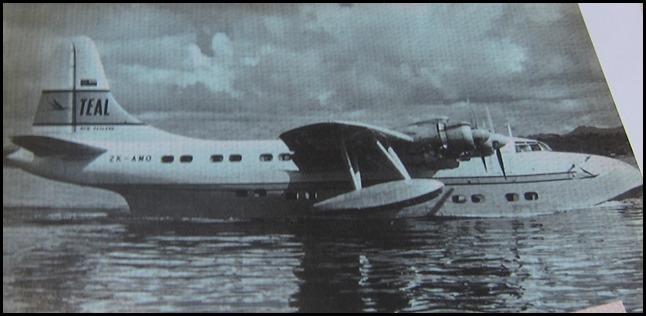 On Thursday, the 15th of September
1960 the final Coral Route flight returned to Auckland. It was one of the
world's last long-range scheduled international flying boat services. A
conversion of a Short Sunderland III, RAF serial JM715. Operated with TEAL from
1947 to 1950. Preserved and displayed in Southampton at Solent Sky Museum.
Latterly Ansett Flying Boat Services VH-BRC Beachcomber, retired in 1981.
Short Solent ZK-AMO RMA Aranui is now restored
and on display at the Museum of Transport and Technology (MOTAT) in
Auckland.
Other
routes: From 1940–1950, TEAL operated a single route, from
Auckland to Sydney with its Short flying boats; and from 1948–54 contracted an
ANA DC-4 to serve Melbourne - Christchurch. From 1950–54 Wellington was also
served by flying boat to Sydney.
From 1954 with the introduction of
the DC-6s, Christchurch - Sydney and Auckland - Sydney were started, with TEAL
now operating its own Christchurch - Melbourne and Auckland - Melbourne
services.
Services to Brisbane from Auckland
and Christchurch followed in 1959; and Wellington resumed international service,
at first only to Sydney, in 1960.
Meanwhile, the flying boat service to
Suva was replaced by DC-6 to Nadi in 1954; and when the last flying boat service
closed in 1960, the flight was extended to Pago Pago and Tahiti. In late 1964,
the French cancelled TEAL's licence to Tahiti and the Coral Route service
terminated at Pago Pago. Air New Zealand were permitted to return to Tahiti in
1967.
Lockheed L-188 Electra: The last new
type to be operated by TEAL was the Lockheed L.188 Electra. Five of this type
were operated between 1959 and 1972 by which time TEAL had changed its name to
Air New Zealand. The Electras were sold in 1972 to United States
interests.

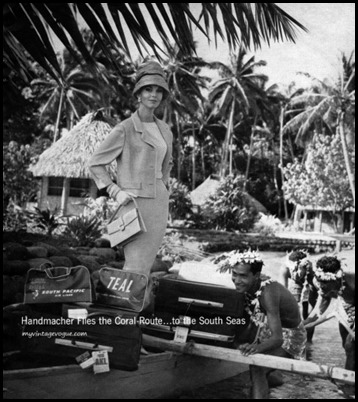 TEAL themery can still be found at
the Flying Boat Beach Bar and Grill at the Aitutaki Lagoon Resort and Bar (the
venue for our date night on the island). Here the well-to-do of the fifties,
including movie stars John Wayne, Cary Grant and the like, stopped over for a
few hours, or even overnight, while the planes were serviced or waited for
weather to clear. Bare backed labourers wrestled forty four gallon drums down a
stone jetty, whilst passengers took a cooling dip in the beautifully coloured
lagoon. Al fresco showers under the coconut palms and simple, sandwich lunches
served with local fruits were the order of the day.
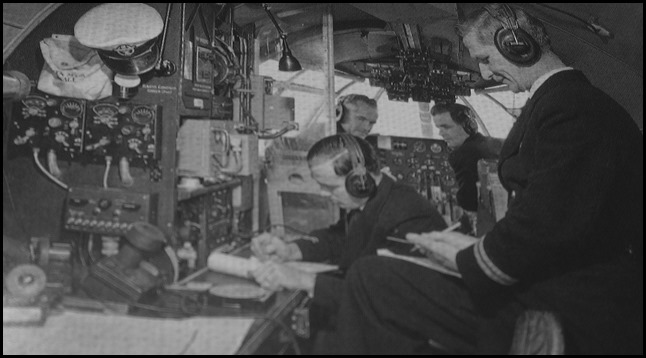 Flying over the boundless blue
Pacific in the 1950’s still had a touch of daring, swashbuckling allure,
especially when flying low enough to see the sharks. Pilots were demigods in
RayBans and hostesses were angels in nifty uniforms. The Solent ambled along at
two hundred and twenty knots. Human fascination for flight was high in the
forties and fifties. Travellers who could afford luxury air travel were to be
envied and admired. The world seemed enormous back then, newly born after the
war and flying was a wonder. Passengers were often treated to the pilot flying
below the recommended height to take full advantage of the stunning scenery
below. Starting in 1952, TEAL flew the Short
Solents on the Coral Route until September 1960. When flying boat services were
finally stopped, the Coral Route was the last of its kind in the world’s new jet
age.
 Airfare for the Coral Route was about
thirty pounds, six times the average wage – one thousand, seven hundred and
seventy five pounds in today’s money. Very few residents from the islands flew
to New Zealand, that was even more expensive. The aircraft carried forty five
passengers on two luxurious decks, more like high-class restaurants, with linen
tablecloths and silver service dining. An onboard chef cooked meals to order.
Powder rooms were used to freshen up. To add to the occasion passengers wore
their finery – ladies in furs and hats. On the rare occasion children
accompanied their parents they were clad in their Sunday best.
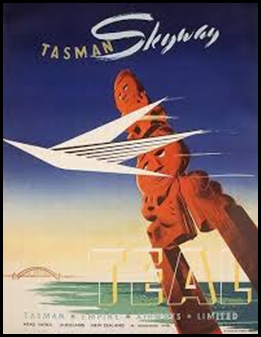 “Welcome to TEAL service. We look
forward to having you with us. Your comfort and convenience are our business. We
believe in the finer points that make good service excellent”. Reads much like
todays. “This pamphlet is designed to provide answers to questions about TEAL
travel.” Explaining what a pamphlet is for seems charmingly old world. The
careful use of words like “plastic” and “aircraft” are used, revealing the
exotic rarities of the age, just half a century ago. “Cigarettes only” meant no
pipe smoking or cigars on board.
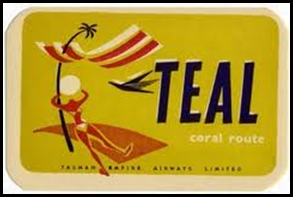 Meals and
Refreshments: In flight meals are served with the compliments of
TEAL. Drinks, light refreshments, cigarettes and souvenirs are also available.
Upon request before the flight, any special infant foods required will be
provided. Magazines, games, children’s toys and a hundred and one other items
from safety pins to writing paper are also carried. There are wash room
facilities on TEAL aircraft and spacious interiors provide plenty of room to
walk about and talk to your friends.
Tipping: Gratuities are not required.
We’re glad to be of service.
Baggage: Free allowances are: First Class - sixty
six pounds for adults and children paying half fare. Tourist Class – forty four
pounds for adults and half fare paying children. Don’t worry about carrying
suitcases – we do the lifting.
Baggage
and Clothing Hints: For swimming in tropical waters, bathing
shoes are often required: many travellers carry a pair of sandals to use as
beach shoes, bathing shoes and slippers. Brushes, shoe trees, coat hangers,
bottles. Warm dressing gowns (light, uncrushable gowns save space, weight and
ironing). Leather containers for toilet gear.
Tropical
Travelling: In tropical climates, easily washable frocks are the
best. Seersucker and nylon are particularly suitable. When arranging male
wardrobes, remember that closely woven gaberdine is not cool and that on many
Pacific islands there are no dry-cleaning facilities. It is always wise to
select dual-purpose garments.
TEAL
Coral Route Passengers: When flying over the Coral Route, you
may wear light, completely informal clothes. Prior to take-off the temperature
in the cabins is high, falling rapidly immediately you are airborne. If you are
on a TEAL aircraft calling at Aitutaki (Cook Islands) you should remember that
though passengers baggage is not available at this stopping point. Soap and
towels are provided at the TEAL rest house but we suggest you carry the
following in your overnight bag: Toilet gear. Change of clothing (if likely to
be required). Bathing suit. Beach towel. Sun glasses. Bathing
shoes.
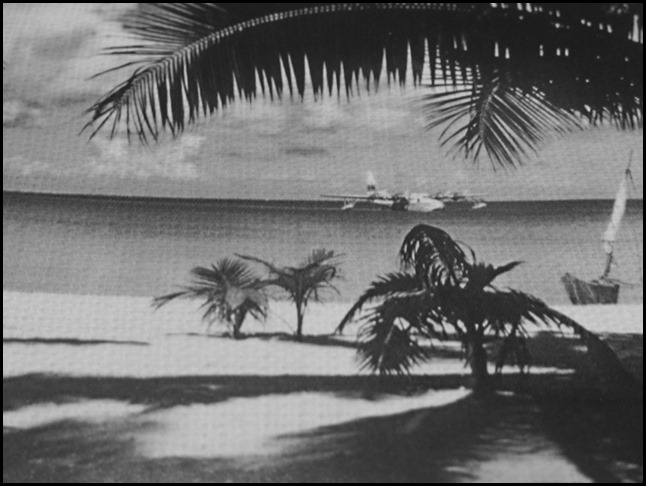 Lockheed
Electra L-188 crash: On the 27th of March 1965, Teal's Lockheed
Electra L-188 ZK-TEC Akaroa, crashed during a training flight at Whenuapai. The
airline had done the following manoeuvre many times before: the Electra, flying
at precisely one hundred and forty knots, could be flown over the runway
threshold, throttled back to idle to drop almost vertically and land on the
runway. As this would never be done on a passenger flight; the reason for the
procedure remains a mystery.
Onboard were a captain, a check
captain, a flight engineer, a navigator; the airline's industrial personnel
officer and an emergency procedures officer standing behind them.
As Akaroa's speed dropped below 140
knots the aircraft landed very heavily, collapsing the landing gear; Akaroa shed
wings, engines, tailplane and tail as she skidded off the runway and across the
grass towards the control tower. Somehow, the two standing officers stayed
standing, the fire extinguishers were turned on and everyone was evacuated
through the cockpit windows, with one man burning his hand on the escape rope.
TEAL salvaged what they could from the wreck and the remains were quickly pushed
into a gully behind the NAC hangars before the public saw them. The crash took
place in the early hours of the morning. The training procedure was quickly
deleted from TEAL's manuals. TEAL purchased a replacement Electra from Qantas
after it changed its name to Air New Zealand on the 1st of April
1965.
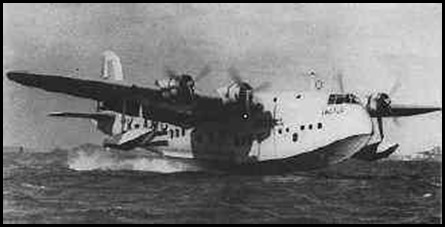 Ownership
transfer: In April 1961 the Australian government decided to
support the wholly Australian-owned Qantas airline and the New Zealand
government bought out the Australian government's shareholding, giving New
Zealand 100% ownership. The airline changed to Air New Zealand (its present
name) also on the 1st of April 1965.
Flying at less than seven thousand
feet for hours on end, waves tops seemingly not that far below holds a romance
not equaled by todays cruising altitude of thirty three thousand. TEAL – Tasman
Empire Airways Limited, was the forerunner to Air New Zealand and a trademark
from a colonial era which focused toward Australia and the northern hemisphere,
rather than islands in the south. Back then, bemused passengers were advised to
bring a swimming costume, unusual advice even then.
 ALL IN ALL YESTERYEAR ROMANCE
BACK IN
TIME |